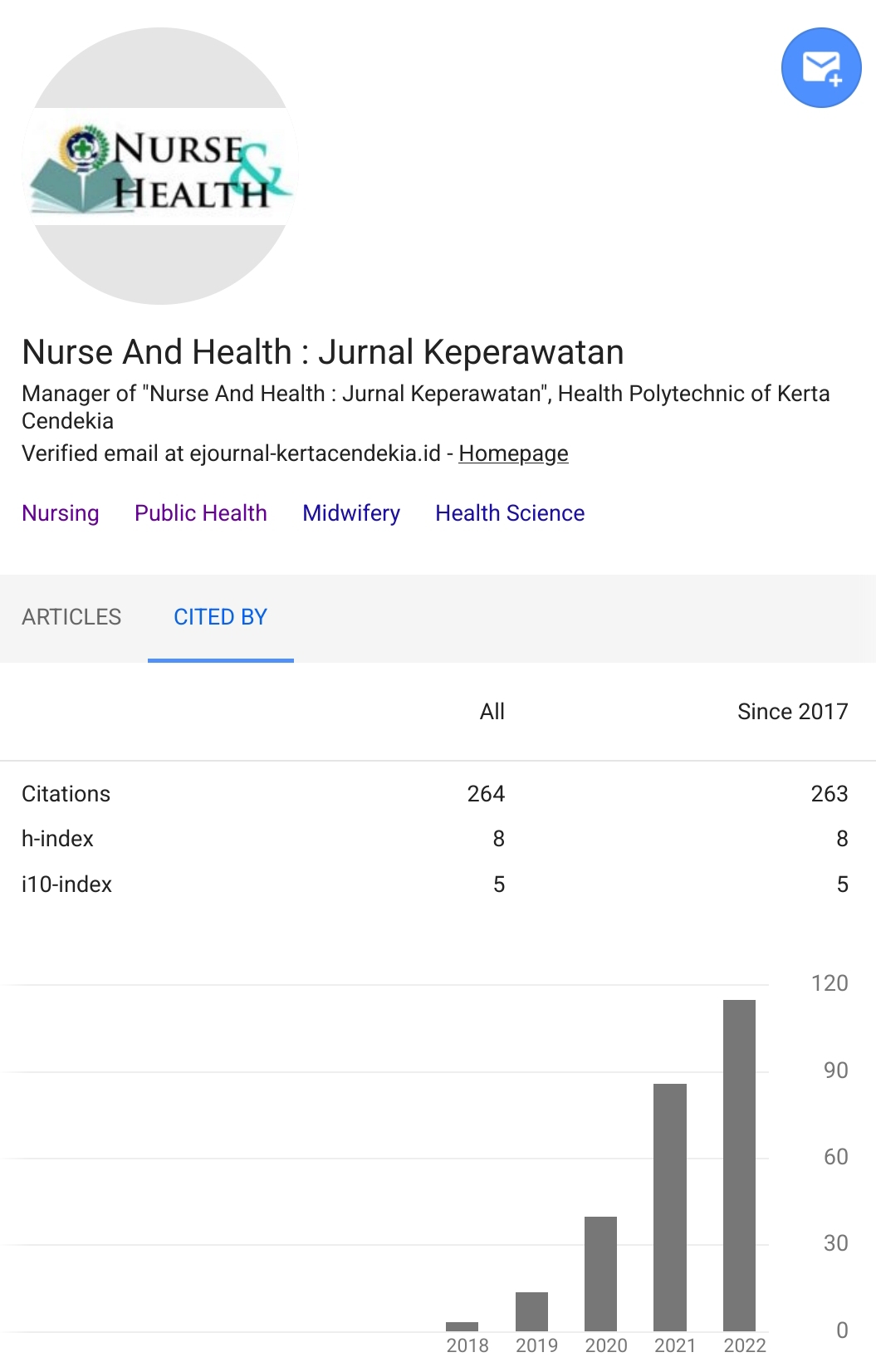THE EFFECTIVENESS OF JSJ (JIN SHIN JYUTSU) IN ADDRESSING EMESIS OF GRAVIDARUM IN PREGNANT WOMEN AT PMB IKA MARDIYANTI SIDOARJO
Abstract
Background: Nausea and vomiting are often ignored because they are considered as a normal consequence at the beginning of pregnancy without knowing the great impact they can cause. The incidence of nausea and vomiting occurs in 60-80% primigravida and 40-60% multigravida. If nausea and vomiting in pregnant women is not immediately carried out further action causes pregnant women to be malnourished so that the fetus does not get adequate nutrition and can have an impact on the fetus it contains.Objective: This study aimed to determine the effect of JSJ massage (Jin Shin Jyutsu) on Emesis Gravidarum on pregnant women in PMB Ika Mardiyanti, Jedong Cangkring Village, Prambon Sub-District, Sidoarjo District, East Java Province, Indonesia.Method: This study used an observational analytic design with a cross sectional approach. The sample in this study was taken by consecutive sampling. The method of collecting data uses primary data, by applying JSJ Massages (Jin Shin Jyutsu) and performing anamnesas against emesis gravidarum experienced by pregnant women. Data analysis using McNemar Test and Mann Withney U Test.Results: The results showed that respondents aged low risk (20-35 years) were 20 respondents (66.66%); had good nutritional status (LILA> 23.5 cm); as many as 25 respondents (83.33%); and had low risk parity (children <5), as many as 21 respondents (70.00%). Statistical analysis with McNemar Test obtained ρ = 0.125> α = 0.05, meaning that there was no effect of JSJ massage on emesis gravidarum. The Mann Withney U Test results obtained ρ = 0.217> α = 0.05, meaning there is no difference between the intervention group and the control group.Conclusion: The results showed that there was no effect of giving JSJ massage to emesis gravidarum in pregnant women. It is expected that midwives will increase information and education communication (IEC) about the handling of emesis gravidarum both pharmacologically and non-pharmacologically so as not to become pathological and have an impact on the mother and the fetus. Keywords: Massage Jin Shin Jyutsu (JSJ), emesis gravidarum, pregnant women.Downloads
References
Anasari, T. (2015). Beberapa Determinan Penyebab Kejadian Hiperemesis Gravidarum Di RSU Ananda Purwokerto Tahun 2009-2011. INVOLUSI Jurnal Ilmu Kebidanan (Journal of Midwifery Science), 2(4).
Astuti, Sri. (2017). Asuhan Ibu Dalam Masa Kehamilan. Jakarta: EGC.
Depkes RI. (2013). Riset Kesehatan Dasar. Jakarta: Badan Penelitian dan pengembangan Kesehatan Kementrian Kesehatan RI.
Dewi, V.N & Sunarsih, T. (2014). Asuhan Kehamilan Untuk Kebidanan. Jakarta: Salemba Medika.
Gunawan, S. (2010). Mau anak laki-laki atau perempuan bisa diatur. Jakarta: Agromedia Pustaka.
Heazell, A., Thorneycroft, J., Walton, V., & Etherington, I. (2006). Acupressure for the in-patient treatment of nausea and vomiting in early pregnancy: a randomized control trial. American journal of obstetrics and gynecology, 194(3), 815-820.
Hidayati, R. (2009). Asuhan keperawatan pada kehamilan fisiologis dan patologis. Jakarta: Salemba Medika.
Jamigorn, M., & Phupong, V. (2007). Acupressure and vitamin B6 to relieve nausea and vomiting in pregnancy: a randomized study. Archives of gynecology and obstetrics, 276(3), 245-249.
Juwita, L. (2015). Literature Review: Terapi Komplementer Akupresur Pada Titik Perikardium 6 Dalam Mengatasi Mual Dan Muntah Pada Kehamilan (Literature Review: Complementary Therapy of Acupressure on Point of Pericardium 6 for Overcoming Nausea and Vomiting in Early Pregn. Jurnal Ners LENTERA, 3(1), 40-50.
King, T. L., & Murphy, P. A. (2009). Evidence-based approaches to managing nausea and vomiting in early pregnancy. Journal of midwifery & women's health, 54(6), 430-444.
Kusmiati, Yuni. (2009). Perawatan Ibu hamil. Yogyakarta: Fitramaya Syafrudin.
Lowdermilk, P.C. (2013). Keperawatan Maternitas edisi 8. Singapore: Elsevier.
Nugraha (2007). Resiko kehamilan. Jakarta.
Pratami. (2013). Evidence Based Dalam Kebidanan. Jakarta: EGC.
Prawirohardjo, S. (2009). Buku Acuan Nasional Pelayanan Kesehatan Maternal dan Neonatal. Jakarta: PT. Bina Pustaka.
Runiari, N. (2010). Asuhan Keperawatan pada Klien Dengan Hiperemesis Gravidarum. Jakarta: Salemba Medika.
Rose, W., & Neil. (2006). Panduan Lengkap Perawatan Kehamilan. Jakarta: Dian Rakyat.
Tiran, Denise. (2008). Mual dan Muntah Kehamilan. Jakarta: EGC.
Walsh, V. (2008). Buku Ajar Kebidanan Komunitas. Jakarta: EGC.
Woolfson, J. (2004). Seri Asuhan Kebidanan Mual Dan Muntah Kehamilan. Jakarta: EGC.
Authors who publish with Nurse and Health: Jurnal Keperawatan agree to the following terms:
- Authors retain copyright licensed under a Creative Commons Attribution-NonCommercial 4.0 (CC BY-NC 4.0), which allows others to remix, tweak, and build upon the authors' work non-commercially, and although the others' new works must also acknowledge the authors and be non-commercial, they don't have to license their derivative works on the same terms.
- Authors are permitted and encouraged to post their work online (e.g., in institutional repositories or on their website) prior to and during the submission process, as it can lead to productive exchanges, as well as earlier and greater citation of published work (See The Effect of Open Access). Authors can archive pre-print and post-print or publisher's version/PDF.








_resize1.jpg)















